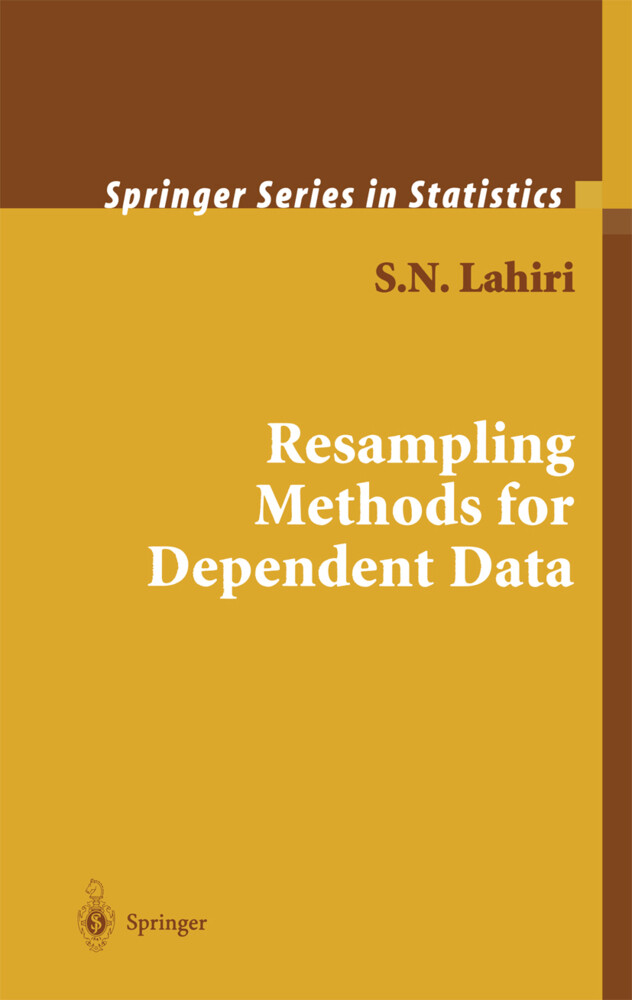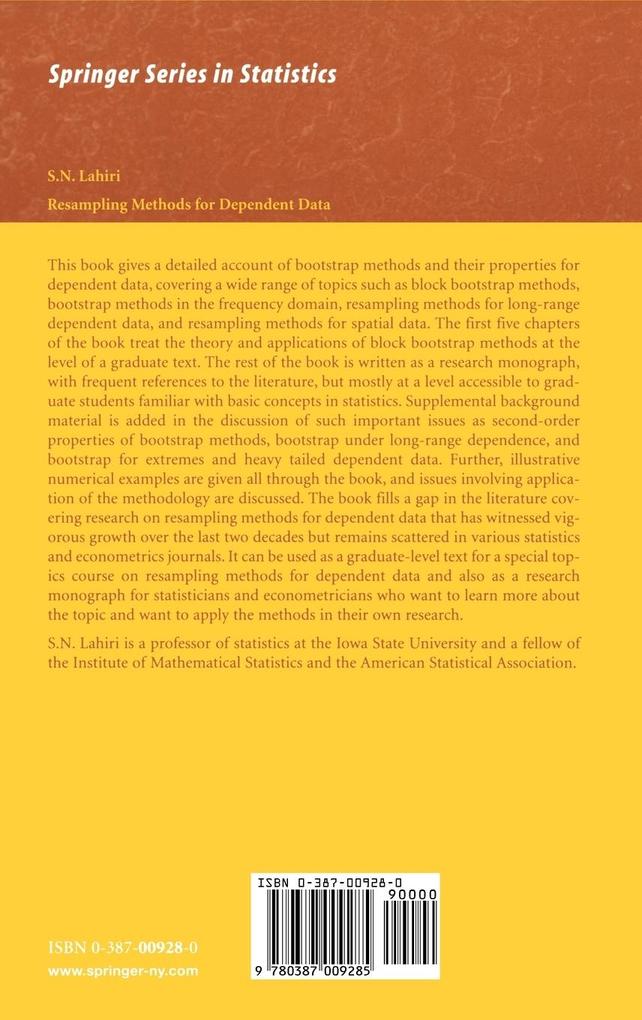From the reviews: "This book contains a large amount of material on resampling methods for dependent data a ] . the book is self-contained and therefore can be used as a text for a graduate level course in resampling methods; at the same time, the book is a valuable reference book for researchers. a ] This is a thorough book going into much detail a ] . an excellent book on resampling methods for dependent data which has filled a long lasting gap in the statistical literature." (Efstathios Paparoditis, Sankhya: The Indian Journal of Statistics, Vol. 65 (4), 2003) "I found this a useful book that organizes many scattered results in a reasonably concise form. The author states that this book has two main audiences, so the first five chapters are a pedantic introduction aimed at graduate students and the last seven a research monograph aimed at researchers in statistics and econometrics. a ] In summary, I learned quite a bit from reading this book and consider it a good reference book for the mathematically inclined." (D.J. Thomson, Short Book Reviews, Vol. 24 (2), 2004) "Bootstrap methods have seen vigorous growth over the past twenty years, and the book by Lahiri is extremely timely in its appearance. a ] The first five chapters are written in textbook style and this part is aimed at a postgraduate student audience. a ] The second part of the book (chapters 6 a" 12) is written in the form of a research monograph. It is therefore primarily aimed at researchers a ] . this is a well written book, containing a wealth of information a ] ." (Tertius de Wet, Newsletter of the South African Statistical Association, June, 2004) "This book is devoted to resampling methods fordependent data, which has been a fast developing area in about the last twenty years. a ] provides an introduction to the area of resampling methods for dependent data and also presents the latest results in the area with quite a long reference list. The first part of the book can be used as a textbook, while the second part, which focuses on the advanced results, can be really useful for researchers in statistics and econometrics." (M. HuAkovA, Mathematical Reviews, 2004f)











